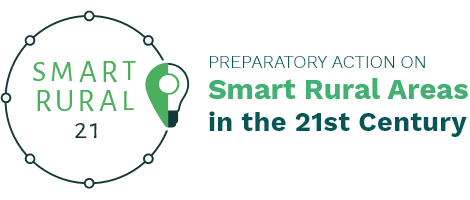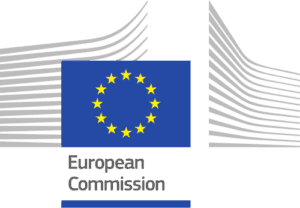Smart Solutions
Village in a Box
Local farm products are packaged into one ‘Village in a box’ twice a year and sold to local consumers.
Implemented in : Schriek, Heist-op-den-Berg municipality
Country : Belgium – Flanders
What’s the solution?
Through central coordination and management, local producers agree to direct a proportion of their production into the creation of a fixed selection of the same local products, packaged into one ‘Village in a box’.
This fixed package of goods in the village in a box is then marketed and pre-sold amongst people in the village and surrounding area/region.
Customers must pre-pay their box of goods. They can pre-order up to 3 months in advance and select whether to have the box delivered to their home (for an additional surcharge) or collect it from a central collection point on a fixed date.
The village in a box can be organised more than once a year – for example a summer box and a winter box.
What makes it smart?
The solution is smart because it supports short supply chains through coordination and cooperation between local producers, accompanied by local marketing strategies to reach local consumers. In this way, it reduces the gap between producers and consumers at local level, offering healthy local products in a simple easy-to-access package and improving local producers’ access to market.
The solution demonstrates:
• Business innovation – it generates local profit and strengthens the viability of the farmers.
• Social innovation – it enhances informally the social ties between producers and consumers resulting in forming a ‘better understanding for each other’.
Overall, the solution improves local resilience by building on the existing assets of local production.

How is the solution implemented?
- The first key step of implementation is to ensure buy-in and cooperation between the farmers – for example through local meetings or individual home visits to local producers.
- Coordination meetings are also useful to bring producers together and to agree the package of goods to be placed in the box and to calculate costs to determine the price for the box.
- Promotional and marketing activities are needed to reach local consumers, for example setting up digital media in combination with written information (leaflet, adverts…) and other local promotional events to announce what will happen.
- Registration of customer orders can take place over a period of 2 – 3 months with choice of delivery at home (surcharge) or take away at a central meeting place on a fixed date.
- The solution can be supported by a side programme of events (e.g. farmers market, tea & coffee, exhibition …) at meeting place on the fixed collection date.
In what local context has it been applied?
In Schriek, there are around 30 farmers out of a population of 5000. Although they constitute an important component of rural life with more than 60% of the area destined for agriculture, they tend to live a relatively hidden life within the local community.
Who was behind the implementation?
A local branch (> 300 members) of a civil society / social movement organisation called ‘Landelijke Gilden vzw’ (Rural Guilds °1972). Some local board members took care of the whole process.
What was the local journey?
• One person in the local Rural Guilds group brought forward the idea of ‘Schriek in a box’ and, after several meetings and discussions, the group was convinced to make the effort under the coordination of the initiator.
• The group conducted home visits to local producers. By explaining and asking for cooperation in a kindly manner the farmers could voluntarily engage to put a product in the box. Cooperation between the farmers as such was not a problem and there was high interest in the initiative.
• One of the biggest challenges at the beginning was to guess which quantity was needed. Another was to find and agree a fixed date when a full set of local produce could be packaged and distributed in a way that the produce was as fresh as possible.
• Such issues, along with the overall goal of the initiative, were discussed and explored in three local meetings with local producers so that agreements could be reached.
• It was agreed that the price of the ‘Schriek in a box’ would be € 20. Of this, € 15 was for the producers, and the remainder to cover costs associated with the initiative (the box, printed materials etc.)
• Alongside the coordination of the producers, other tasks included:
o Design of the ‘Schriek in a Box’ box – made out of cardboard
o A campaign (using leaflets and social media) to promote and sell the box within and outside the village
• The first summer box was agreed and distributed on 16 June 2019. The package was agreed and sales started in April 2019. Every summer ‘Schriek in a Box’ contained the same 9 local products – e.g. strawberries - as agreed with the participating local producers. All the products were grouped, packaged into the boxes and distributed over one weekend.
• The first winter box was agreed and marketed from 15 September 2020, with distribution on 6 December 2020. Every winter ‘Schriek in a Box’ contained the same 13 local products – e.g. rhubarb - as agreed with the participating local producers
• For reasons of aesthetics, it was decided to add cauliflower to a box (to make a nicer picture). However, because cauliflower was not locally grown, a third party had to deliver it from outside the area. This created difficulties of supply and coordination and did not support the message of the ‘local’ box – so this was a mistake and will not be repeated.
What have been the main outputs & results?
- More than 500 Shriek in a Box pieces have been sold - this is a strong level in a village with a population of around 5000.
- Some suppliers have reported a sales increase of 50% and most agree that it has added a valuable short supply channel to their overall business model. More generally there is definitely more knowledge about the possibilities of short supply chains in Schriek.
- There is strong local enthusiasm for the initiative and people – both producers and consumers – have asked to prolong it.
What does it bring the village/community?
- The Schriek in a Box expects to contribute to a more resilient and sustainable business model for local producers – offering them a new access to market through short local supply chains at fair prices.
- Furthermore, in a context in which people are increasingly disconnected from what local farmers do, a seasonal box with local produce can help to highlight the importance of food-growers and help consumers in the area to get to know local farmers and the products they sell – contributing to higher sales also outside of the specific channel of the box and further increasing farm business resilience.
- On the producer-side, the initiative hopes to increase the image and respect of farmers, building a sense of being ‘proud to be a farmer’.
- On the consumer-side, the initiative hopes to foster positive feelings towards the agricultural sector, to remind them that healthy food is produced locally and of the need and value for paying fair prices for good quality local produce. Knowing which people are locally involved in farming also hopes to help create a better understanding and sympathy towards the needs of local producers.
What’s needed
Financial resources
Main types of cost:
The main costs are associated with:
• Coordination time;
• Production and printing of the box itself and related marketing materials.
Financial needs:
Zero!
The initiative is self-financing. All related costs are included in the sales price of the ‘village in a box’.
The initiative was also supported by five volunteers in Schriek who carried out the tasks - mainly administrative and communication tasks - without expenses.
Therefore, no seed capital is needed provided a local initiator agrees to take on the coordination role without expenses.
Funding received:
| Source | Amount | Funded |
|---|---|---|
| Time of volunteers | 0 € | Initiation, coordination, organisation of local meetings |
| Sales of the Shriek in a Box | 10,000 € | 500 x € 20 Producers, the box and marketing materials |
Human resources
• A visionary person who can enlighten the others
• A first mover in the group who gets the others on track
• The action must be seen by stakeholders in this case ‘farmers’ as positive (doable, profitable …
• Technical skills: social media and administrative tasks (and humour).
• ‘Content development’ skills during the process (learning by doing)
Physical resources
All what is needed is already in a village:
• a meeting place to prepare the action;
• a spot where people can receive the box.
What to do…
- During ordering time, keep the farmers informed. They must be prepared to deliver enough.
- Finding a good date to deliver asks for a profound insight in the scheme of harvesting and coordination with producers.
- Communication strategy is key in this case. Every opportunity should be taken to promote the action to potential consumers.
and not to do
- Don’t allow orders by e-mail or phone. When it exceeds 100 orders, it is not doable.
- Don’t add in products from outside the locality even if it feels like it will make a more complete package.

